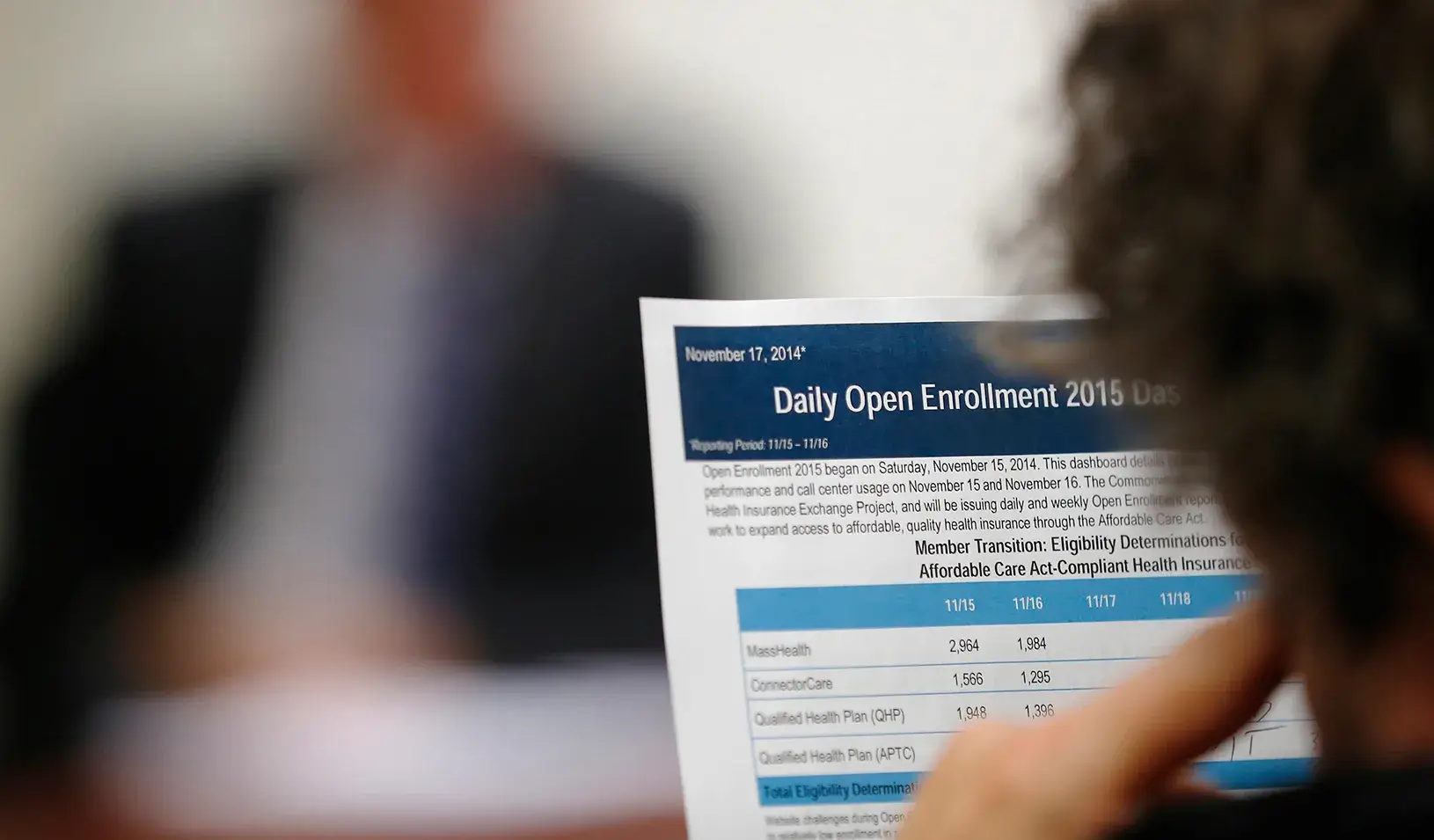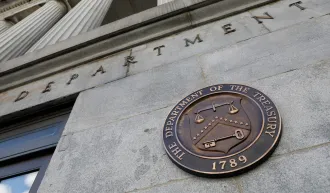Alain Enthoven: How to Fix the Affordable Care Act
A Stanford scholar explains why we must break away from employer-sponsored insurance.
June 16, 2015

A Stanford scholar explains where the Affordable Care Act falls short. | Reuters/Brian Snyder
Alain Enthoven, Stanford emeritus professor and health care expert, has over 40 years of experience in the industry. He helped draft a plan for universal, market-based health insurance under President Jimmy Carter (which was not adopted) and spent four decades as a consultant to Kaiser Permanente. He developed the concept of managed competition, in which a regulatory body encourages competition among health care providers to keep prices low and quality high, and offer choices to consumers. The model would standardize the coverage contracts to make comparisons easy and adjust payments to health plans to compensate for the health risks enrolled. Here, he describes the politicization of ACA, how employers could get out of the insurance business, and where the future of health care is headed.
What’s working with ACA, and what isn’t?
The biggest negative about the ACA is that it did not seriously address and solve the problem of excessive cost. Health care in this country costs far too much. It is straining public finances at every level of government. A National Academy of Sciences report estimated that 30% to 40% of health care spending in this country is waste. There’s also too much complexity. And with the exchanges, or “marketplaces,” there’s also a problem of gross mismanagement. I think the rollout of the exchanges was an obvious disaster. What I feared was that it was going to give a good idea — informed, conscious consumer choice ought to drive health care — a bad name. But fortunately, private companies were creating private exchanges and doing it on time, on budget, and making it work efficiently, without the big catastrophes. I was on the advisory board of one of the successful exchange startups.
Why didn’t they reform the health care delivery system to get the costs under control?
The “medical industrial complex” spent some $1.3 billion in a year to lobby against it.
The main positive of the ACA is that everybody in this country should have affordable access to necessary health care. I think it’s wrong to persist in a situation in which many families go broke because one of them gets sick, or they go without adequate medical care. The ACA is a serious attempt to assure everyone access to health care coverage.
What will be the biggest hurdle moving forward?
To get the costs under control and to get a good delivery system, we need reformed incentives, that is, competition among health plans and informed cost-conscious consumer choice of health care financing and the delivery system. The two biggest barriers to that are the government-supported bastions of open-ended fee-for-service: Medicare and employer-based health insurance, which is subsidized by a huge tax subsidy by the federal government. Health insurance is a part of employee compensation. The fact that it is excluded from the taxable incomes of employees without limit is costing the federal budget this year about $250 billion. This tax break is an incentive to choose more costly health insurance. An extra $100 of employer-sponsored health care costs about $60 after tax. Employer-sponsored insurance has performed poorly. Most insured people are locked into inflationary open-ended fee-for-service. And try as they might, employers have not been able to stem the tide of rising health care costs.
By the way, at Stanford, for at least 25 years now, we offer employees a range of choices, including open-ended fee-for-service and also Kaiser Permanente, usually the low-priced plan. Stanford pays the price of Kaiser, and the employee who wants to choose a more costly plan pays the difference out of his or her own pocket. That is an incentive to choose the most economical plan. When that happens, experience shows that people migrate to what they see as value for money. In 2013, 45% of Stanford employees chose Kaiser. That drove some decisions for other providers to innovate to improve value.
What I recommended is to close the tax break and use the money instead to give everybody a fixed-dollar contribution toward the plan of their choice, and give them a range of choices.
We must also reform Medicare along the same lines. Interestingly enough, there have been several major bipartisan commissions recommending that. In Medicare, people should have a range of choices of competing plans. The government should establish payments on behalf of everybody, every Medicare beneficiary, which would be a fixed-dollar amount and which would pay most of the cost of Medicare, and introduce managed competition. Your plan gets more money if you are predictably sicker and more costly.
There are elements of managed competition in Medicare now. But still, the amount that the government pays is tied to fee-for-service costs. Instead, it ought to be tied to the costs of the lower-priced plans in the competition.
So essentially, to get insurance out of the workplace, the government should give everyone a fixed amount. They can choose the low-cost plan, which is fully covered, or the higher-cost plans, but then they pay the difference.
Correct.
Is that realistic? Will the U.S. ever completely break from workplace-sponsored plans?
Thirty or 40 years ago, fee-for-service medicine was generally considered to be the hallmark of high quality. Then, gradually, after more research and thinking, people came around to realizing fee-for-service was so bad that now the Secretary of the Department of Health and Human Services had announced that she is going to change Medicare so 80% of it is not fee-for-service. And Congress appears to think that is a good thing to do.
The tax treatment of employer-sponsored health insurance might change. Right now, the tax break for employer-paid health insurance is costing the budget $250 billion and costing the states another $25 billion a year. That’s really big money. For one or another reason, I think the tax break is likely to be either abolished or capped.
The ACA includes the so-called Cadillac tax. That is, the Affordable Care Act included an excise tax on the excess of health insurance plans that cost more than $10,200 per individual and $27,500 per family per year, starting in 2018. Some in Congress wanted to do that much earlier. But Obama conceded to demands from organized labor to postpone it until he was out of office. Now there’s a political move by unions and employers to try to postpone or abolish that excise tax.
Even the main Republican alternative to Obamacare proposed a limit on tax-free employer contributions. It was much too high a limit. I think it ought to be set at the cost of an efficient plan, $5,000 or $6,000 per individual per year, $20,000 per family per year, something like that. These are California numbers. It’s probably less in less costly parts of the country. As in the case of Medicare payments to hospitals, the limits could be adjusted to account for regional differences in the cost of resources used in health care.
What’s going to force action is when it becomes necessary to raise some revenue.
So is getting insurance out of employers’ hands contingent on that tax break?
Another possibility is with the private exchanges. Private exchanges — like Aon Hewitt and Towers Watson — can go to an employer like Stanford and say, “If you would like to offer your employees choices, then we can set that up for you. We have contracted with a number of big insurance companies. We’ll give your employees a choice of Kaiser Permanente, Blue Cross, United, Aetna, two or three others. And we’ll set up the process. We’ll give them good information, let them consider the alternatives, and make a choice. And then you, Mr. Employer, just offer a fixed-dollar contribution at or below the low-price plan.”
Experience is already showing that the typical employer-paid health insurance costs far more than what people would buy with their own money, especially if it was after-tax dollars.
What can make ACA simpler?
Get the IRS out of the business of setting the subsidy payments. That’s a complicating factor. Somebody who has a low income, below four times the federal poverty line, says, “I need a subsidy.” He goes to the exchange. And the exchange says, “Well, first of all, we have to contact the IRS.” And let’s say it’s 2013, and you want to sign up for 2014. The exchange has to contact the IRS and find out what was your income in 2012, which is the most recent available number. There have been a lot of problems to do with that, including confidentiality problems. But they get that amount, and then they translate that into a projection of what your income will be in 2014 to determine how big your subsidy will be.
Then after 2014, they look back and say, “What was your actual income? How did it compare with what was estimated for you?” If you earned more than the estimate, then you have to give money back. If you earned less, then you get money.
Instead, everybody should get a fixed-dollar subsidy that would be included in each person’s taxable income. The IRS would only get involved after the taxable year, as it always does, anyway.
I also have doubts that the employer mandate is needed. Most large employers are providing health insurance to their employees [already]. Congress was afraid if they didn’t have the employer mandate, then employers would send their lower-paid people to the exchange for a government subsidy.
My point is everybody should get a subsidy. Employed people already do, though they may not know it. I would propose to pay for it by abolishing the tax break on employer health insurance contributions. The subsidies would be the same whether you’re in or out of employment and in or out of the exchange. That could simplify the whole thing.
What else hampers U.S. health care?
Unfortunately, the Affordable Care Act has become extremely controversial politically. I think Obama made a serious mistake in making it an all-Democrat thing. Big, complicated social insurance programs like that, in the past, have always been somewhat bipartisan. Now, some people might say, “Republicans never would have joined.” But they might well have joined in a more moderate scheme if Obama had really wanted it. Unfortunately, it has become extremely partisan, with each side blaming the other.
There are some people who hate Obamacare, and they promise to repeal it and replace it. One of the ironies is the Republicans have not been able to agree on a replacement. They will need one if the Supreme Court rules that the ACA subsidies are illegal in states that have not set up their own exchanges.
If you want to throw rocks at Obamacare, there are plenty of things to criticize. It’s very badly written, very sloppily drafted, too complex — it overreaches. The fact that so many states have tried and failed to set up their own exchanges, even with generous subsidies from the federal government, suggests it was poorly planned and managed.
But the fact that one can point to many valid criticisms, in my view, doesn’t outweigh the fact that it is important to try to get just about every legal U.S. resident access to health insurance.
For media inquiries, visit the Newsroom.
Explore More

Building Better Infrastructure Auctions

Economists to Congress: Don’t Bail out Big Business



